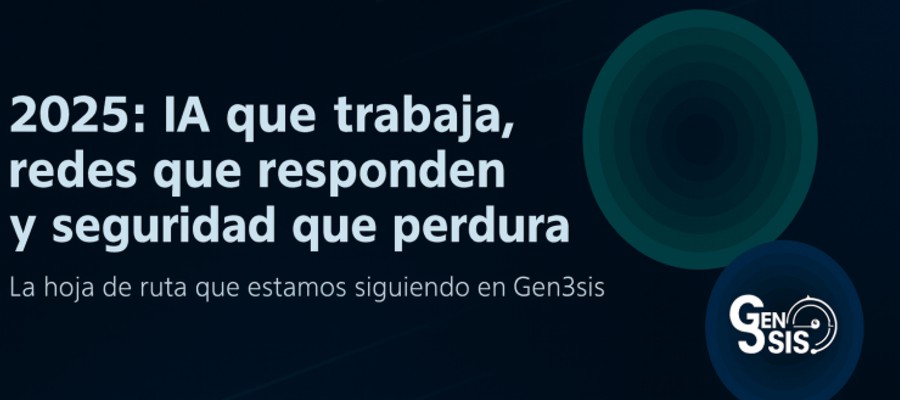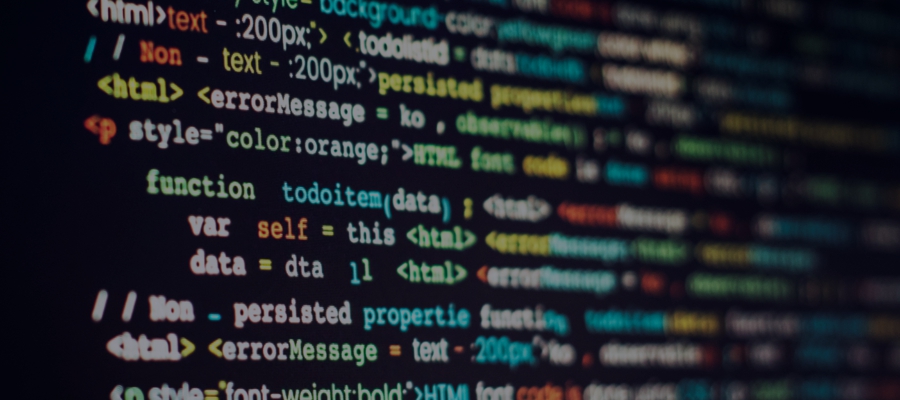ARTIFICIAL INTELLIGENCE: AN ALLY IN PROJECT MANAGEMENT?

When I started as an IT Project Manager, I didn’t really imagine how much support artificial intelligence could provide. At first, I was skeptical about AI, but I soon discovered that it’s not a replacement, but rather a tool that enhances our capabilities. In my case, I have used several of the available AI tools to organize ideas, prepare meeting agendas, even draft emails, and simplify repetitive processes. It may seem like a small thing, but the truth is, it makes a big difference: it allows me to focus on strategy, while artificial intelligence helps me with operations. The most important thing is that AI does not replace the human element. Project management still requires active listening, empathy, assertiveness, and clear communication. No algorithm can replace an honest conversation with a teammate or the ability to motivate in a moment of pressure (and hopefully never will). But it can give us speed, structure, and clarity in time-consuming processes, a resource that we don’t have to spare in this daily dynamic. I believe that the real value lies in balance. As project managers, we have to learn to integrate technology without losing the essence of what it means to be human. AI can help us anticipate risks, analyze data, and propose solutions; we contribute judgment, context, and vision. At Gen3sis, we believe in this balance between human talent and technology. That is why we promote the responsible use of artificial intelligence as a true ally for project management in the region. Today, we are convinced that artificial intelligence is not the future, but the present, and the sooner we learn to work with it, the more prepared we will be to lead projects in an agile and effective manner. Now I ask you: how are you integrating artificial intelligence into your project management? Amy Alvarado Latin America Operations Coordinator
FROM HANDWRITTEN LETTERS TO INSTANTANEOUS COMMUNICATION

I remember those days when waiting was part of the message. I was born in the 1980s, a time when the sound of a rotary phone was an event, and a letter was a treasure. My brother, for work reasons, spent long periods away from the city, and the way we kept in touch was not instantaneous, but personal and emotional. We eagerly awaited the arrival of his letters, handwritten in his unique handwriting, which conveyed his love for each member of the family. Every line told us how much he missed us. And when it was time to wait for the call at the “telecom,” there was a unique excitement, almost like a ritual. Those minutes on the phone were sacred, a time to catch up, share laughter, and hear his voice after so long. Today, the way we communicate has changed dramatically. We have the world at our fingertips. A family member goes on a trip and we can see their photo in real time, make a video call from the top of a mountain, or send them a voice message in an instant. The barrier of distance has vanished, bringing a number of considerable benefits: immediacy, the ability to connect with people all over the planet, and easy access to an unprecedented amount of information. However, in this avalanche of connectivity, have we lost some of the essence? Communication has become more efficient, but sometimes less intentional. An emoji replaces a letter, a quick text message replaces a call. It is easy to fall into the trap of emotional disconnection, of losing the value of waiting, of losing that personal touch that can only be achieved when you dedicate time to it. I think we are constantly connected, but are we really communicating? Information overload also forces us to develop a new kind of filter, to differentiate between what is valuable and what is simply noise. It is a crucial skill in today’s world. This reflection is not meant to idealize the past or reject our present. It is an invitation to find balance. To take advantage of the innovative tools that technology offers us to be closer, without forgetting the value of being authentic and human contact. At Gen3sis, we have made this philosophy our mission. We focus on going beyond immediacy, creating solutions that not only facilitate communication between companies and customers, but also make it more genuine and meaningful. We understand that in a world saturated with information, what really creates connection is the value that is delivered. Therefore, our goal is for each interaction with a customer to be not just an exchange of data, but an anticipated moment that solves a problem or contributes to planning a better future. Just as in the past, a call on the “telecom” was an event that was eagerly awaited because of what it meant, at Gen3sis we seek to make each of our interactions a genuine and valuable point of connection. We transform simple communication into a lasting relationship of trust, demonstrating that technology is a bridge, not a wall, and that what really matters is the impact that the message leaves. Milena Rodriguez Gen3sis Communications Department
Innovation as a driver of expansion

In today’s dynamic business world, innovation is no longer just an advantage; it is now the key that opens the door to sustainable growth and opportunities. At Gen3sis, we have seen that innovation means daring to open doors that seemed closed, crossing borders, and connecting with markets that previously seemed unattainable. For years, expanding a business meant opening physical offices or forging local alliances. Today, technology allows us to go much further. Innovation, and especially artificial intelligence, gives us the ability to transform ideas into real solutions that impact sectors as diverse as logistics and healthcare in markets with a strong technological drive. This changes the rules of the game. It is no longer about “selling for the sake of selling,” but about building solutions capable of transforming operations anywhere in the world. Thus, we cease to be mere suppliers and become strategic allies in the growth and expansion of our customers. The role of the commercial area in an innovative environment At Gen3sis, the commercial team does not just drive sales: it is the voice that listens to the market, gathers needs, and converts them into inputs to strengthen our innovation cycle. Every time we identify a gap or an unmet need, an opportunity arises to create relevant solutions that make us stronger. When we combine Gen3sis’ innovative vision with the strategic knowledge of our sales team, we find the right niches, customize our proposals, and accelerate our purpose: to grow and expand globally. The future is innovative Innovation is in Gen3sis’ DNA. It is the most powerful tool we have to break new ground, build stronger relationships, and make a global impact. Because innovation is not just about technology, it’s about connecting with purpose. How has innovation transformed the way your company grows? Tell us in the comments. Angie Alexandra Suescun Gen3sis Business Expansion Area.
The future of the help desk: an evolving role

When we talk about a help desk, the first thing that comes to mind is a fairly familiar process: someone reports a problem, it is assigned to an engineer, who analyzes it, solves it, and finally closes the case. A simple cycle that, with a few additional steps, has worked well for years. At Gen3sis, we believe that it is not about starting from scratch, but about improving what already works. We want the help desk to be more agile, more efficient, and, above all, more human. To achieve this, we have found the perfect ally in artificial intelligence: it does not replace the engineer, but works alongside them, like an “extra hand” that multiplies human capabilities. AI as a complement to the engineerThe key is to add, not subtract. With AI, we incorporate two additional steps that strengthen the traditional process:
Smart solutions for a constantly changing world.

In 2025, I stopped asking “which AI model is the best?” and moved on to “how do we put AI to work in the business with clear metrics and without putting data at risk?” That’s the conversation I have today with manufacturers, wholesalers, channels, and telcos in Latin America. From demo to agent that gets the job doneThe novelty is no longer a chatbot that answers questions: it’s agents that understand a goal, plan steps, and execute on your systems. End-to-end customer service, IT agents who open and close cases, or operational agents who adjust parameters on the network. This trend marks the leap from testing AI to operating it in production. AI on the device: PCs with NPUs and local decisionsThe other wave is bringing AI to the endpoint (AI PCs). What does the business gain? Less latency, more privacy, and more predictable costs. Analysts project more than 100 million AI PCs in 2025 and a strong renewal cycle; the total PC market is around 274 million units this year. For us, this means moving some of the AI workloads to where the work happens, not just to the cloud. Security tip: Some endpoint features (such as Recall in Windows) raise privacy concerns. Recommendation: Enable opt-in, define exclusion lists and device policies from day one. AI-ready networks on site: Wi-Fi 7 and 5G-AdvancedIf intelligence runs at the edge, the network cannot be the bottleneck. Wi-Fi 7 incorporates 320 MHz channels, 4096-QAM, and Multi-Link Operation (MLO) to increase capacity and lower latency on campuses and in offices. 5G-Advanced (3GPP Rel-18) enhances uplink, positioning, and automation for industry and campuses. In practice: smoother experiences, less waiting, and more predictable operations. Data: from “uploading PDFs” to reasoning systemsFor agents not to hallucinate, data must be governed. We are moving from basic RAG to pipelines with quality, deduplication, observability, and controlled memory. Simply put: without organized data, there is no reliable AI. Security that looks 10 years aheadTwo priorities: post-quantum cryptography (PQC)—plan the migration today—and more secure software—reduce classic memory failures. Security that protects without slowing adoption. Regulation: preparing to sell to the worldThe European AI Act already sets out obligations and deadlines. If you operate or sell to the EU, you will need transparency, risk management, and traceability. Better to design it well today than redo it tomorrow. What are we implementing at Gen3sis?TransformatIA 3.0 (diagnosis with numbers) We see where an agent really helps: people, steps, and tools. We deliver a short plan with expected savings and dates. Key question: Which process gives you the most time and money back in 90 days? ImplementIA 3.0 (putting agents to work) We set up a first agent working in your day-to-day and measure its impact from the start. Key question: Which repetitive task would you turn off tomorrow if an agent did it well today? ProtectIA 3.0 (security that doesn’t get in the way) We set clear rules and responses to incidents, and close weak points before escalating. Key question: How do you increase defense without slowing down AI adoption? OptimIA 3.0 (make it perform and get people to use it) We make AI cheaper per use, faster, and easier to adopt for each role. Key question: If the cost goes down and the experience improves, what new use case becomes profitable? AdminIA 3.0 (operate at the service level) We operate AI every day with clear dashboards and service goals; everything is measurable and auditable. Guiding question: What level of service would let you sleep peacefully? ResolutIA 3.0 (self-resolving support) We bring together agents + knowledge + approved steps to resolve repetitive issues without waiting: fewer tickets, shorter times, and more satisfied users. Key question: How much support could you automate without losing control in 90 days? Our goal For AI to stop being a pilot and become a living, measurable, and auditable business system.As CEO of Gen3sis, my position is simple: 2025 is the year to industrialize AI. We are not looking for the “newest” tool, but rather the right architecture: useful agents, reliable data, fast networks, and security that will last for the next decade. With TransformatIA, ImplementIA, ProtectIA, OptimIA, AdminIA, and ResolutIA, we are already executing this with our customers and partners in the region. SOURCES:Gartner — 2025 Trends (Agentic AI, PQC, governance). GartnerMcKinsey — State of AI 2025 and agents in business. McKinsey & Company+2McKinsey & Company+2Canalys/IDC — AI PC dynamics and 2025 renewal. Canalysmy.idc.comApple — Apple Intelligence and Private Cloud Compute. Apple+1Apple Security ResearchMicrosoft — Recall privacy guide; operational alert (UPenn). Microsoft Supportisc.upenn.eduWi-Fi 7 (Cisco, Meraki) and 5G-Advanced (3GPP Rel-18). CiscoCisco Meraki Documentation3GPPRAG 2.0 — surveys and best practices (arXiv/Google Research). arXiv+1research.googlePQC (NIST FIPS 203–205) and memory-safe (CISA/NSA). NISTwolfSSLU.S. Department of DefenseAI Act — timeline and obligations for GPAI. Digital Strategy EU Juan Sebastian Gomez,CEO of Gen3sis
Every challenge, a new opportunity

We have always been exposed to change, both personal and professional. These changes allow us to see life from new perspectives and motivate us to learn from each experience and improve significantly. Today, it is incredible to observe the many changes that technology has brought us and the speed at which everything is evolving. We have seen the emergence of new ways of working that allow us to work from anywhere in the world, optimizing time and improving quality of life. Repetitive processes that used to take hours are now automated, giving way to what is really important: understanding customer needs and meeting them creatively and effectively. In this context, a key concept emerges: #resilience. We hear this term often, but what does it really mean? It is the ability to face, adapt to, and overcome difficult situations, emerging from them stronger than before. At the business level, @Gen3sis is a clear example of resilience. Since its inception, it has faced multiple internal and external challenges that have strengthened its mission and vision. Thanks to its ability to adapt, it always remains at the forefront of technological innovations. In 2025, we consolidated a new era with products powered by artificial intelligence. These solutions reflect our vision of anticipating market needs and accompanying our clients’ growth. Resilience is also evident in our international expansion. Today, Gen3sis has a presence in Colombia, the United States, and Mexico, strengthening our competitiveness and broadening our horizons. We want to share a message with the people reading this text: every change is an opportunity to reinvent ourselves. Resilience is activated when we put creativity into action, analyze what is happening around us, and evolve alongside technology and new ways of life. Our team has embraced this vision. Every member of Gen3sis has learned to challenge technological changes, to grow, and to move forward together on this new path. Each achievement confirms that strength lies in unity, in a shared vision, and in a commitment to the future. Turn your challenges into momentum for growth: that is true resilience. Milena RodriguezG3 Communications Department
¡HELLO WORLD!

In the vast universe of programming, few phrases are as iconic and universally recognized as “Hello World”. This simple program, which usually consists of displaying the message “Hello, World” on the screen, has become a rite of passage for novice programmers and a nostalgic nod to veterans. But what makes this simple program so special and enduring in software development culture? The origins of a tradition The history of “Hello World” dates back to 1972, when Brian Kernighan included it in the documentation of the B language, predecessor of C. However, it was its appearance in the influential book “The C Programming Language” , co-written by Kernighan and Dennis Ritchie in 1978, which catapulted him to fame. Since then, it has become the quintessential introductory example in virtually all programming languages. “Hello World” transcends linguistic and cultural barriers in the developer community. It is a common reference point that facilitates comparison between different programming languages. When a developer is faced with a new language, looking up how “Hello World” is implemented is often the first step in understanding its quirks and syntax. The concept of “Hello World” has evolved beyond simply writing code. It has become a metaphor for the first steps in any new project or technology. Releasing a “Hello World” can mean publishing the first blog post, making the first commit to a GitHub repository, or deploying the first version of a web application. The developer community has embraced “Hello World” with a touch of humor and reverence. It is common to see t-shirts, mugs and posters with creative variations of the program. Some developers have even created extremely complex and far-fetched versions of “Hello World” as an exercise in ingenuity and skill. In conclusion, “Hello World” is much more than just a test program. It is a symbol of beginnings, a reminder of the importance of fundamentals, and a common thread that unites generations of developers. In a field that changes as rapidly as technology, “Hello World” remains a constant reminder that even the most complex systems begin with a simple greeting to the digital universe.
Is AI the best solution?

Artificial Intelligence (AI) has become one of the most promising and disruptive technologies of our era, transforming industries and redefining our interaction with the digital world. However, amid all the hype, a crucial question remains: Is AI really the panacea for all our challenges? To answer this question objectively, it is necessary to examine both the advantages and challenges presented by this revolutionary advance. The advantages of AI are undeniable and far-reaching. In terms of efficiency and productivity, AI has demonstrated an impressive ability to process large amounts of data and perform repetitive tasks at a speed that far exceeds human capabilities. This efficiency translates into greater precision in fields as diverse as medical diagnostics or quality control in manufacturing, where AI often outperforms human performance. Additionally, the constant availability of AI systems enables uninterrupted operations in various sectors, from customer service to security monitoring. Perhaps most exciting is AI’s role as a catalyst for innovation, driving significant advances in areas such as personalized medicine, autonomous vehicles and renewable energy optimization. However, the AI landscape is not without significant challenges and limitations. One of the most pressing issues is the potential for AI to perpetuate or even amplify existing biases if it is not designed and trained with due care. This issue underscores the critical need for diversity and ethical awareness in the development of AI systems. Another significant challenge lies in AI’s limited ability to fully understand human context and emotions, a crucial factor in many interactions, especially in fields such as healthcare or customer service. Additionally, there is growing concern about possible over-reliance on technology, which could lead to a loss of critical human skills in the long term. Security and privacy issues are also at the center of the AI debate. The massive use of personal data required to train and operate many AI systems raises serious concerns about the protection of personal information and the possibility of its misuse. We can also add that AI is not the most appropriate option when complex ethical judgment, radical creativity and innovation, deep and empathetic human interactions, or decision-making in unprecedented situations are required. These areas remain the domain of human cognition, highlighting the importance of a balanced approach in AI implementation. So when is AI really the best solution? AI demonstrates its value most clearly in situations that involve analyzing large volumes of data, executing well-defined and repetitive tasks, making predictions based on historical patterns, and optimizing complex processes. In these scenarios, AI not only improves efficiency, but can also uncover insights that might go unnoticed by the human eye. The key to effectively harnessing the potential of AI lies in recognizing that it is a powerful tool, but not a universal panacea. A balanced approach involves fostering collaboration between humans and AI, combining the analytical and processing strengths of AI with human intuition, creativity, and ethical judgment. In parallel, it is crucial to invest in education and adaptation to prepare society to work alongside AI, rather than be replaced by it. This goes hand in hand with the development and application of robust ethical frameworks that guide the responsible design and use of AI. In conclusion, AI is not inherently the best solution for every problem, but it is an incredibly powerful tool when applied properly. Its true potential is realized when it complements and augments human capabilities, rather than attempting to replace them entirely. As we move forward in this era of rapid technological development, it is essential to maintain an open and critical dialogue about the benefits and risks of AI, ensuring that its development and application are aligned with our values and needs as a society. The question should not be whether AI is the best solution in absolute terms, but how we can responsibly and effectively integrate it into our lives and work to create a more prosperous and equitable future for all.
Is it possible to combine technology and sustainability?

In a world increasingly aware of environmental impact, technology plays a crucial role in the search for sustainable solutions. But how can we combine technological advances that are truly sustainable? Here are some key strategies: The first step to achieve sustainable technologies is to consider the entire life cycle of the product from its conception. This implies: – Selection of materials: Opt for recycled or biodegradable materials. – Energy efficiency: Design for minimal energy consumption during use. – Durability: Create products that last longer, reducing the need for frequent replacements. – Recyclability: Facilitate disassembly and recycling at the end of the product’s useful life. The transition towards renewable energy sources in manufacturing processes is essential. This includes: – Installation of solar panels in factories and offices. – Use of wind energy to power data centers. – Implementation of energy storage systems to optimize the use of renewables. Adopting circular economy principles can revolutionize the way we create and consume technology: – Device buyback and refurbishment programs. – Repair and upgrade services to extend the useful life of products. – Sharing platforms to maximize the use of resources. Software also plays a crucial role in sustainability: – Energy efficiency algorithms to optimize device performance. – Software updates that improve functionality without the need for new hardware. – Data analysis tools to monitor and reduce environmental impact. Finally, educating consumers and industry professionals is essential: – Sustainability training programs for engineers and designers. – Awareness campaigns about the environmental impact of technology. – Transparency in business practices and supply chains. In conclusion, achieving sustainable technologies requires a holistic approach that spans from initial design to the end of the product’s useful life. With innovation, commitment and collaboration across industries, we can create a technological future that benefits both society and the planet.









